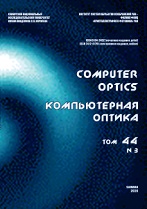|
This article is cited in 5 scientific papers (total in 5 papers)
OPTO-IT
Transfer of spin angular momentum to a dielectric particle
V. V. Kotlyarab, A. G. Nalimovab, A. A. Kovalevab, A. P. Porfirevab, S. S. Stafeevab
a IPSI RAS – Branch of the FSRC “Crystallography and Photonics” RAS,
443001, Samara, Russia, Molodogvardeyskaya 151
b Samara National Research University, 443086, Samara, Russia, Moskovskoye Shosse 34
Abstract:
We show here that in the sharp focus of a linearly polarized laser beam the spin vector flux has only transverse components (the effect of photonic wheels or photonic helicopter). For a linearly polarized optical vortex, the orbit-spin conversion leads to the appearance of both longitudinal and transverse components of the spin density vector in the focus. Spin-orbit conversion is experimentally demonstrated for a circularly polarized Gaussian beam when a transverse energy flux (orbital angular momentum) arises in the focus, which is transmitted to a microparticle and makes it rotate. Switching the handedness of circular polarization (from left to right) switches the microparticle rotation direction. It is also shown here that an azimuthally polarized vortex beam with an arbitrary integer topological charge generates in the focus a spin density vector that only has an axial component (pure magnetization), while the transverse spin flux is absent.
Keywords:
spin angular momentum, circular polarization, orbit-spin conversion, spin-orbit conversion, vortex beam.
Received: 27.12.2019
Accepted: 11.04.2020
Citation:
V. V. Kotlyar, A. G. Nalimov, A. A. Kovalev, A. P. Porfirev, S. S. Stafeev, “Transfer of spin angular momentum to a dielectric particle”, Computer Optics, 44:3 (2020), 333–342
Linking options:
https://www.mathnet.ru/eng/co795 https://www.mathnet.ru/eng/co/v44/i3/p333
|

|




 Contact us:
Contact us: Terms of Use
Terms of Use
 Registration to the website
Registration to the website Logotypes
Logotypes








 Citation in format
Citation in format 
